The garden helping to heal the pain of pregnancy loss
- Published
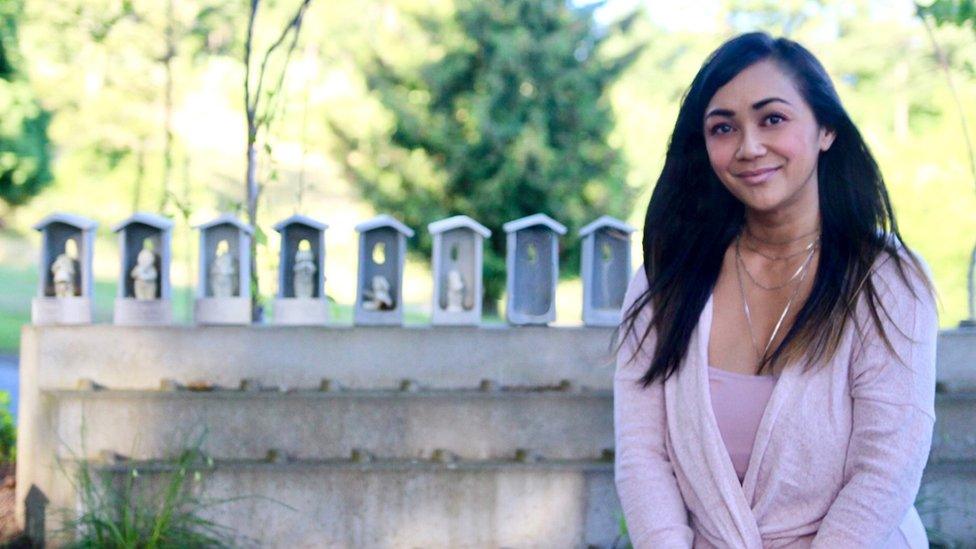
A unique garden is helping Canadians to break a taboo that exists in many societies. It is allowing parents to talk openly about miscarriage.
After Debbie Balino gave birth to her first child, she and her husband looked forward to a future with a large family. It was something they had always dreamed of.
But as they prepared for the arrival of their second daughter the problems began.
"I lost Victoria at 21 weeks in 2013," remembers Debbie.
That was her first miscarriage, but she went on to experience eight more over the next five years.
"I was torn apart and put through the wringer," she says.
Doctors couldn't work out why Debbie was having these problems after her initial healthy birth. About 3,000 Canadian women experience stillbirth every year and it's reckoned that 15-20% of pregnancies result in miscarriage - but to suffer nine in a row is exceptional.
Five of the babies were lost in the first trimester of pregnancy and four in the second.
Amid all the emotional turmoil Debbie and her family were experiencing, some poignant and very practical questions reared their head.
What do you do with the remains of a child lost during pregnancy? How do you honour their memory?
A miscarried child can exist in a kind of limbo, thinks Debbie.
"They are too young for a funeral, but too old to ignore they existed. We didn't know where to place Victoria, so we just left her in the hospital. She was actually referred to as 'biowaste'. It broke my heart in pieces."
Debbie was too upset after losing Victoria to think about things like funerals. But with her second miscarriage - William, after 16 weeks - came a revelation. A doctor told Debbie about a place nearby called the Little Spirits Garden.
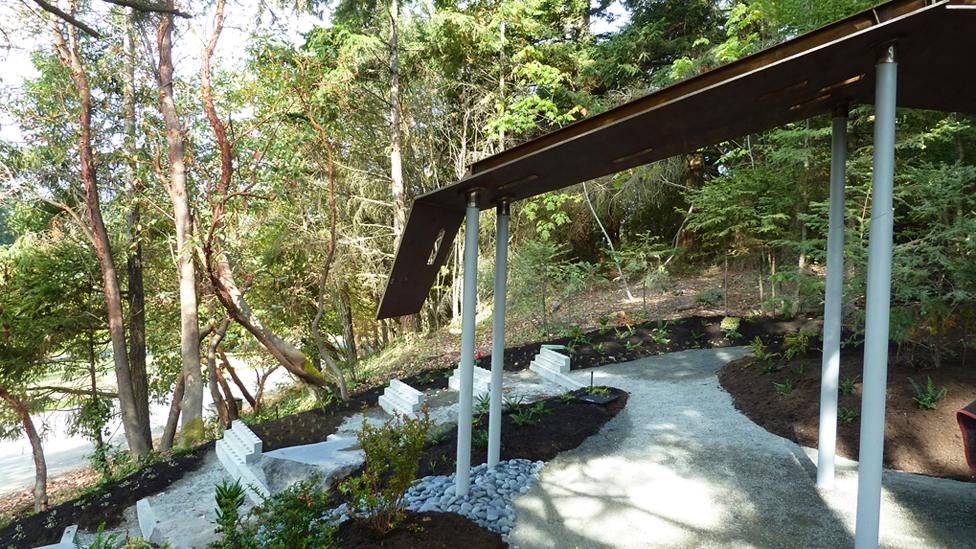
The Little Spirits Garden is a landscaped garden dedicated to the memory of children lost during pregnancy. It was completed in 2012, and sits within the grounds of the Royal Oak Burial Park, a cemetery in Victoria, British Columbia.
Within it are a series of long, concrete plinths, with small grey houses resting on them - these are "spirit houses", and each one commemorates a lost child. There are about 400 houses in the garden, with space for up to 3,000.
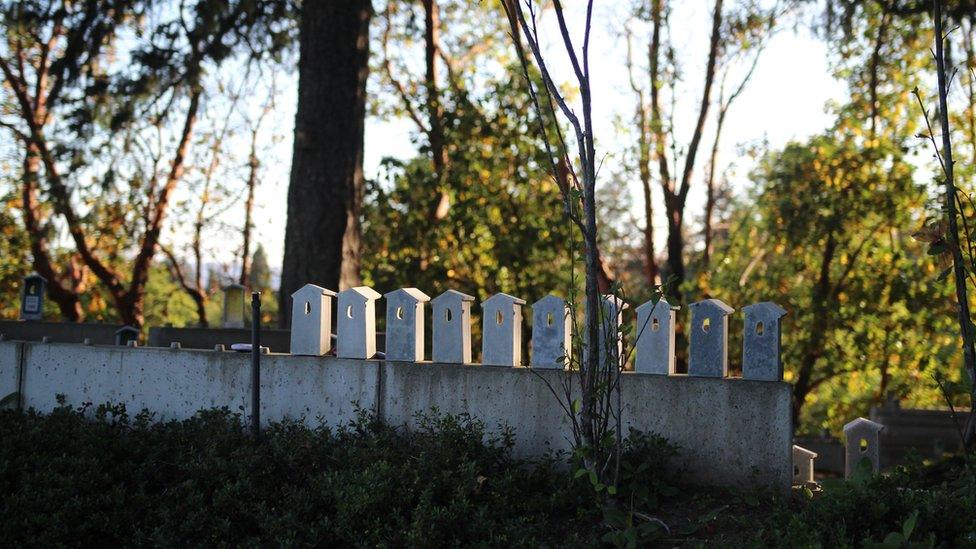
Doctors put bereaved parents, like Debbie, in touch with the team that runs the garden, if they think it will benefit them. The service is free and is supported by donations.
If a child is cremated, ashes can be scattered in a special section of the garden, or placed in an ossuary - a vault which sits underneath a pavilion.
Whether or not the child is cremated, parents are given a spirit house.
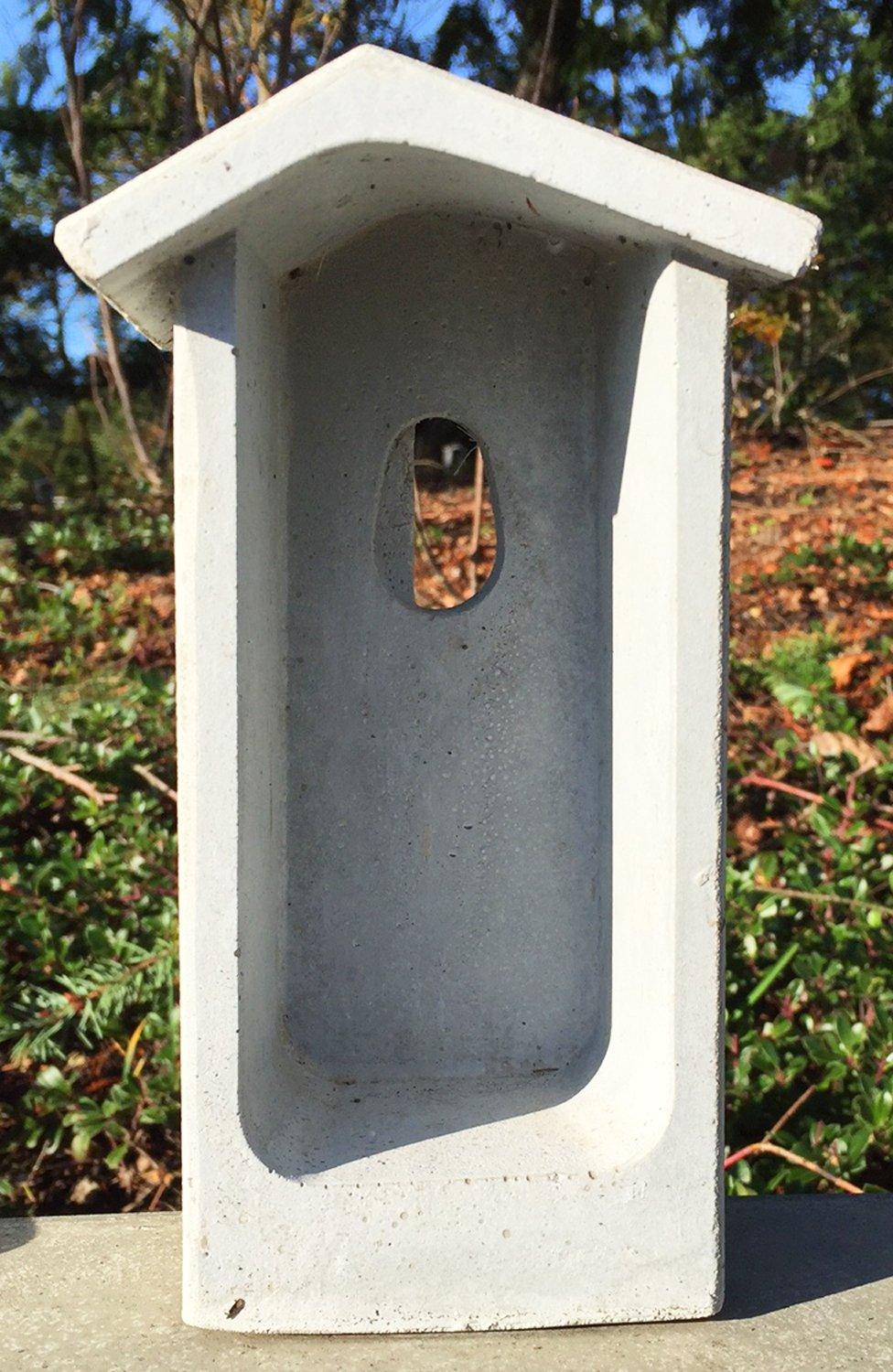

These are made of refined concrete. They also have a small womb symbol inscribed inside, a motif repeated throughout the design of the garden.
The concrete is designed with indentations, so that over time moss will grow over it.
Families can customise their houses with their own designs, or leave them bare, with just a named inscription.

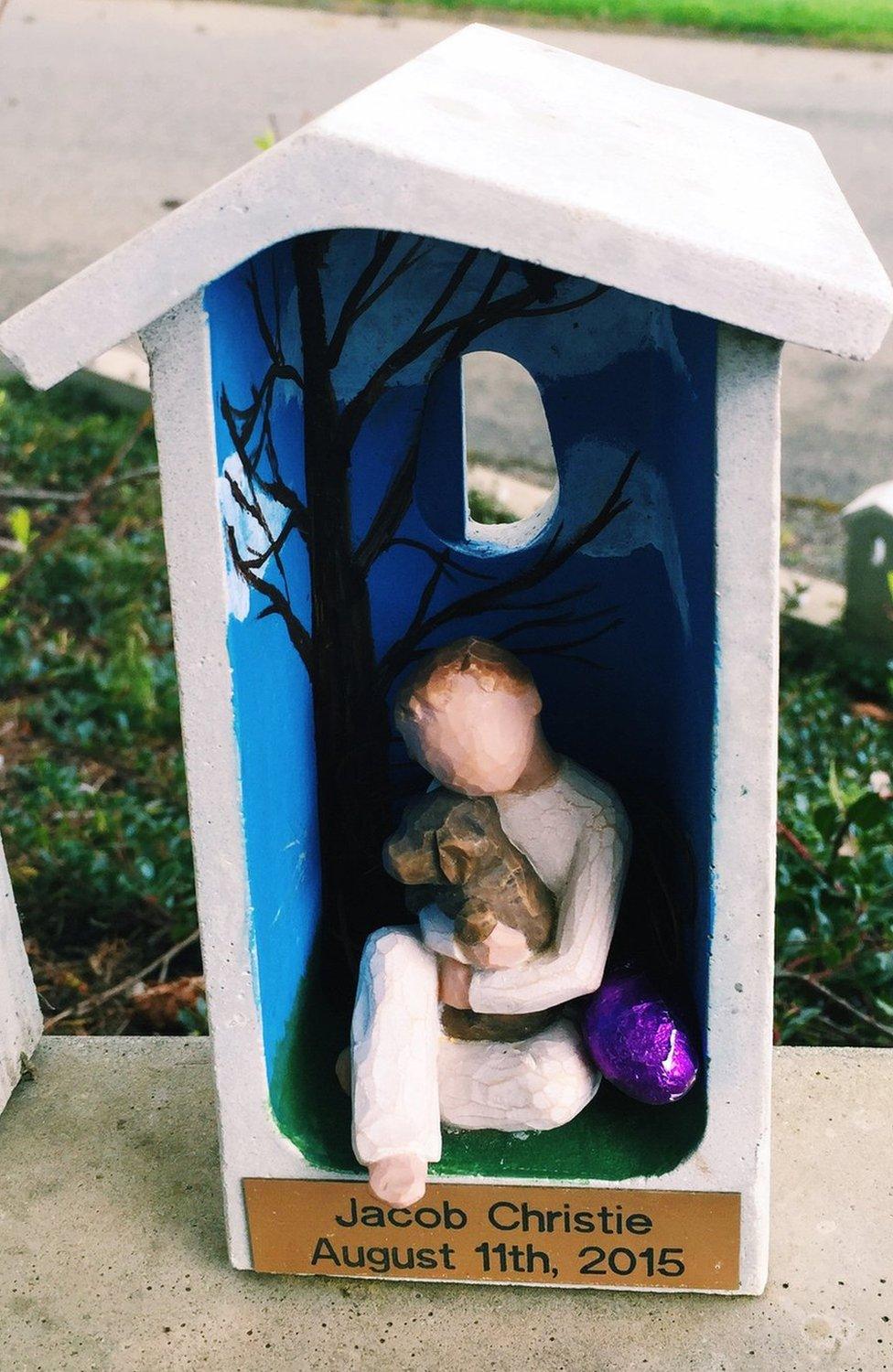

"It's really difficult when you have a miscarriage and you don't have a body, because there isn't a physical object," says Debbie.
"The Little Spirits Garden provides that object for you, which is the house."
As she only found out about the garden after her second miscarriage, she made sure she got a house to mark the first too - as well as the subsequent seven.
"I have a lot of real estate in this garden," she says.
"The feeling I got from it was a sense of validation - this sense that someone can see what I feel. You can look at this and call it your daughter's spirit house. It felt so good to be able to have a home for her."
She visits her nine houses regularly.
"I go on their birthdays - their due dates - and the days that they passed. I go there for Mother's Day, Father's Day, Easter, Valentine's Day. My husband and I need to connect with the children we would have otherwise celebrated with," says Debbie.
"To be given a spirit house is the most generous, loving, kind thing that one human being can do for another. Because the sad thing about miscarriages or stillbirths is that it's such a taboo to discuss it. This garden is a kind of place where you are free to feel what you need to feel and grieve the way you want to grieve."
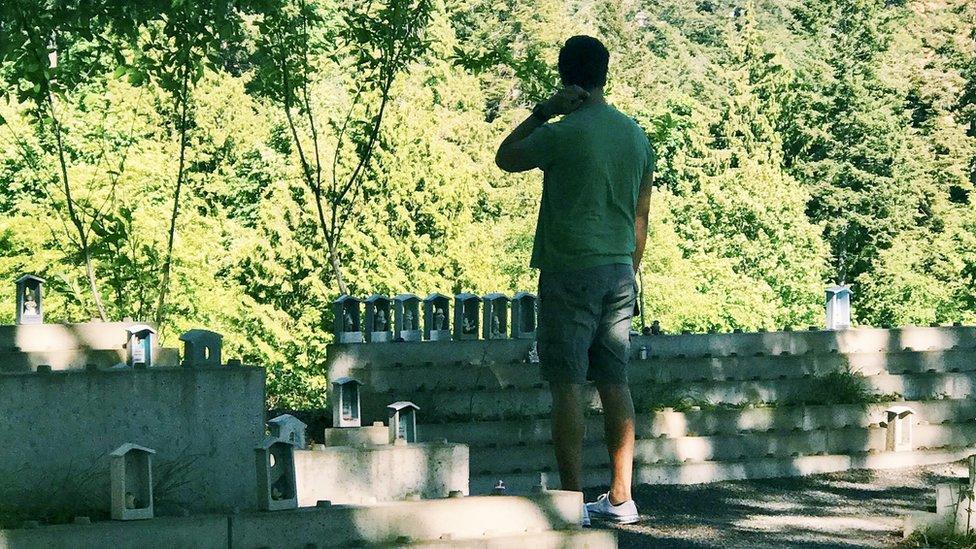
Debbie's husband in the Little Spirits Garden
The garden was designed by Canadian landscape architects Bill Pechet and Joseph Daly. The inspiration came from Bill Pechet's time in Japan, where he lived for two years. While there he was struck by a Buddhist tradition known as Jizo - the practice of creating a small, votive statue to mark the death of a child.
These are usually placed in temples, which have cemeteries attached to them. During festivals they are adorned with clothing, typically little bonnets woven by parents, and they are all brought out together to form a pageant.
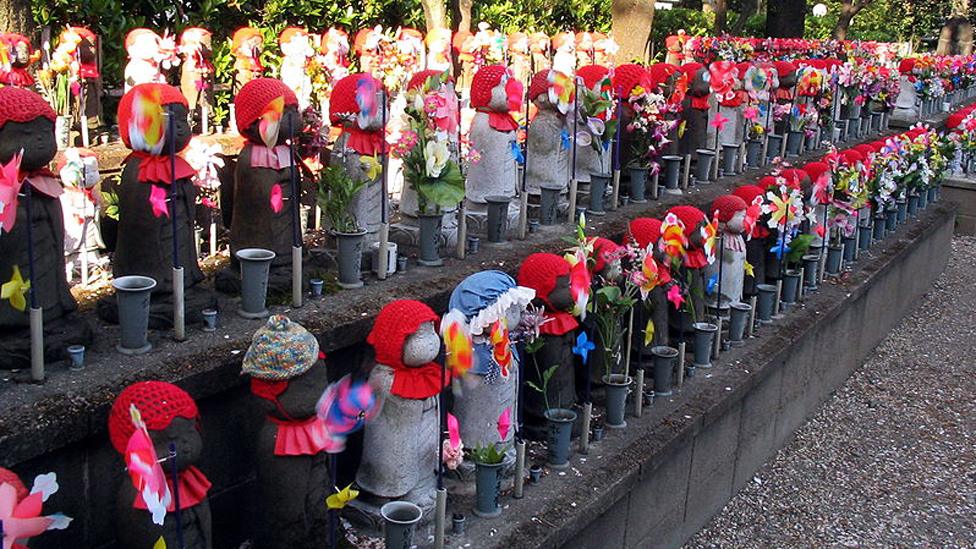
"I found this inspiring, so tender and beautiful to see these creations," says Bill. "I was struck by the sense of magnitude when these were displayed together on special occasions, showing a collective loss in society."
He wondered if something similar could work in Canada.
"I realised that the Spirit Garden would have to be an ecumenical space, because we are a pluralistic society in Canada. I would need a symbol that was inclusive, and the house is a universal symbol of protection, and non-denominational."
His team held a series of workshops to test what people thought of the idea, inviting parents who had lost children, counsellors and religious leaders.
There was some resistance, Bill remembers - especially from those of the Christian faith, who were taken aback by the Japanese origin of the idea - but he persisted.
"My inner monologue at the time told me our entire country is based on immigration and adopting ideas from the rest of the world," says Bill.
Eventually everyone came round to the idea, and the garden became a reality.
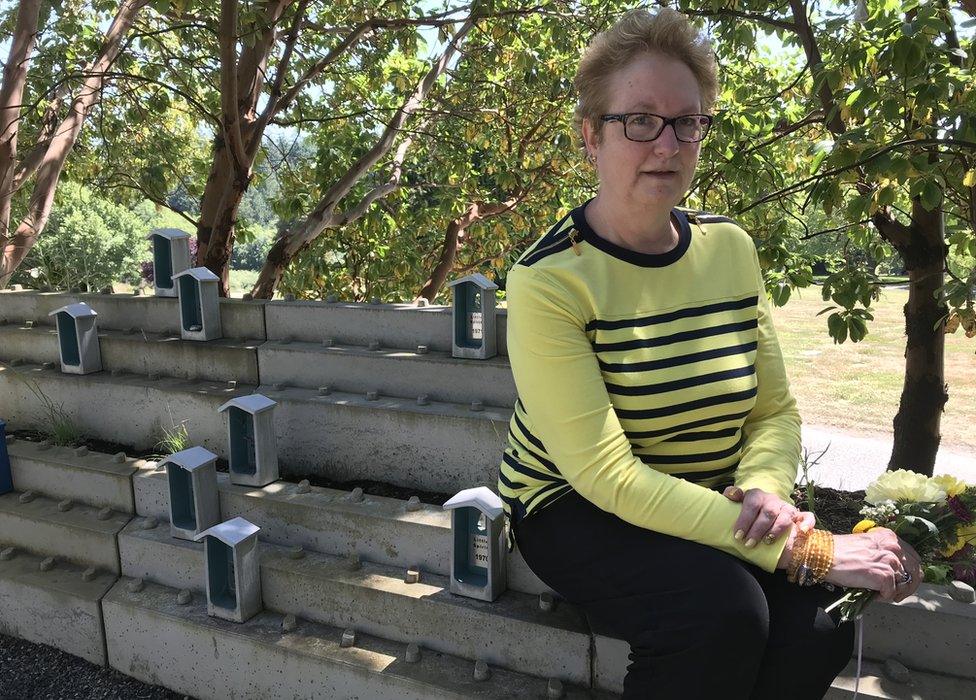
Susan McMullen works at the burial park
Working at the burial park for five years has given Susan McMullen an insight into the taboo that prevented discussion of miscarriage in years gone by. She has welcomed a number of elderly visitors, including some who have travelled long distances to get there.
"A woman came recently who had experienced a loss in 1955. She asked if she could still have a spirit house. And of course she could."
Susan thinks it offers a way of closure for people of that generation, who were unable to openly grieve the loss of a pregnancy.
Susan herself keeps two houses in the Little Spirits Garden.
"When I had my miscarriage in 1991 it was upsetting to my husband and I because we'd already had our son, so we got a bit ahead of the game - we started telling people a little sooner," she says.
"So people in your friendship group hear that you are pregnant - but then you are not pregnant any more. It was a very awkward time."
More than two decades later she and her husband chose to commemorate that loss with a house in the garden - but Susan also wanted to mark another loss too.
"My mother had suffered a miscarriage in the early 1960s, prior to my birth," she explains.
This had long weighed on her mind.
"So I've taken the opportunity to honour the sibling that came before me. I put a little house out for 1960, and one for 1991 as well."
She fears that her mother received no sympathy at the time.
"The mindset was just, 'It happens.' You move on. It was a 'pull up your socks and get on with it' kind of thing. If you lost a baby there was a reason for it," Susan says. "But our new generation feels empowered to share our grief."
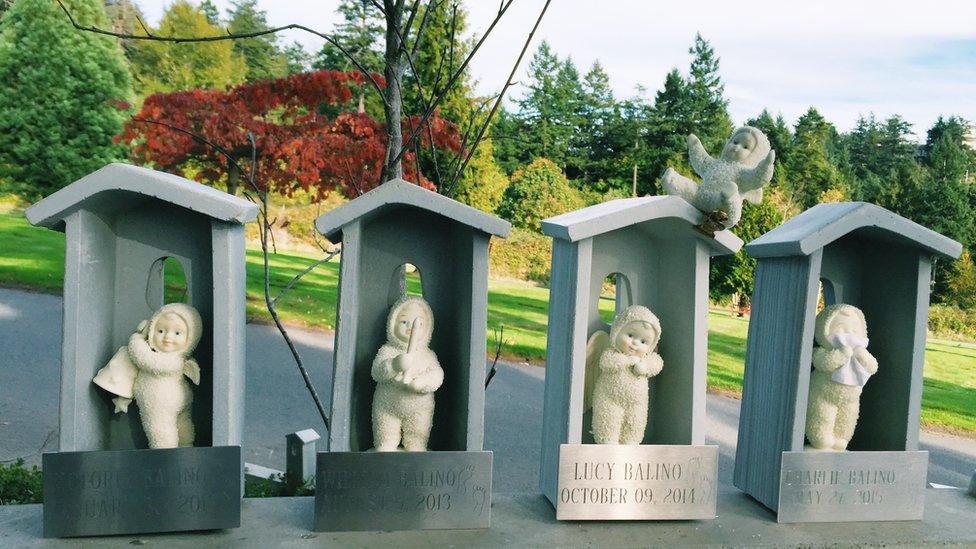
Debbie likes to visit the Little Spirits Garden with her daughter.
She too had her expectations dashed, Debbie says, when waiting for a brother or sister who never arrived.
Now eight years old, she has been accompanying Debbie to the garden since the age of three.
"She would prance around, dance and play, talk to her brothers and sisters, bring them Easter eggs, sing to them. Tell them, 'I started school', 'This is what I wore for Halloween.' She talks to the houses," says Debbie.
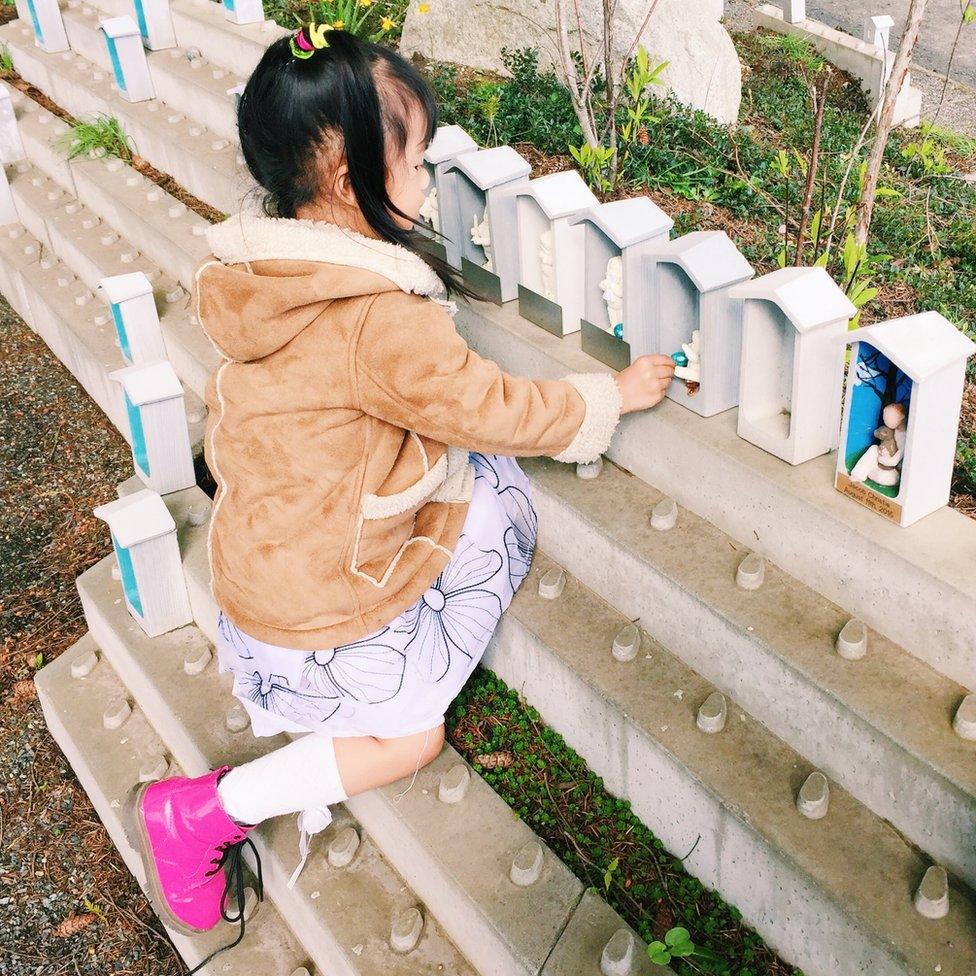

Debbie calls the support network of people she met through her miscarriages "the loss community". And it was by joining this community that she found a longed-for son.
She met a woman who had also suffered miscarriages, who offered to be an egg donor for her.
"We created a boy a year ago," she says. She refers to him as a "rainbow baby", as healthy babies born after a miscarriage are sometimes known.
He now visits the garden too.
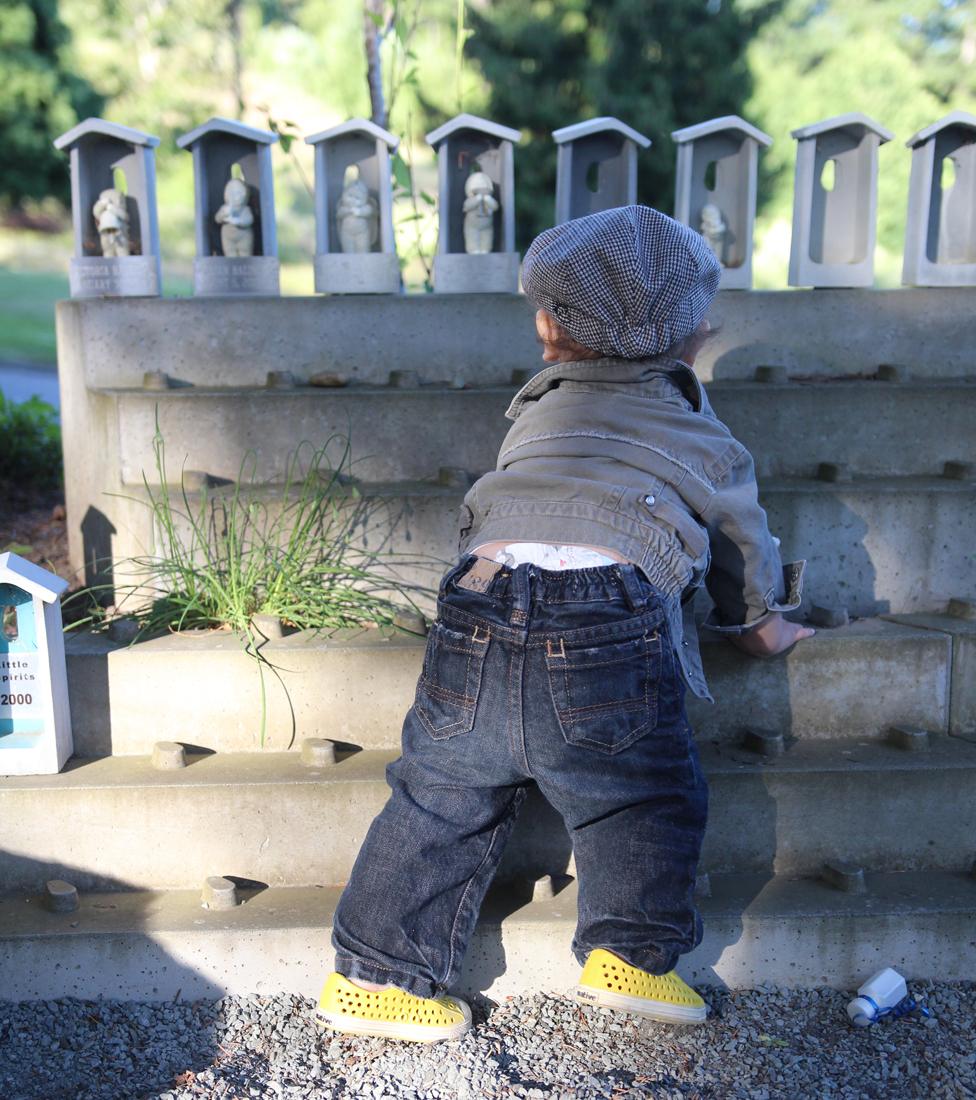

Follow Dougal Shaw on Twitter: @dougalshawbbc, external
You can read Debbie's blogs about her experience of miscarriage here, external
You may also be interested in:
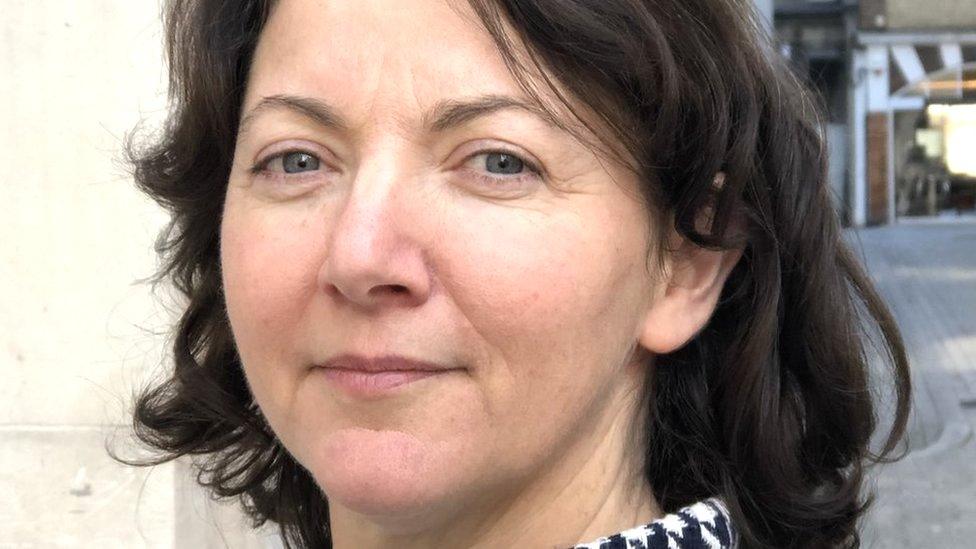
Gaby Eirew suffered two bereavements in the space of a month. The experience impelled her to find a way of prompting parents to record video messages for their children. It also helped her to heal a deep wound in her personal family history.
If you die early, how will your children remember you?
Join the conversation - find us on Facebook, external, Instagram, external, YouTube, external and Twitter, external.
